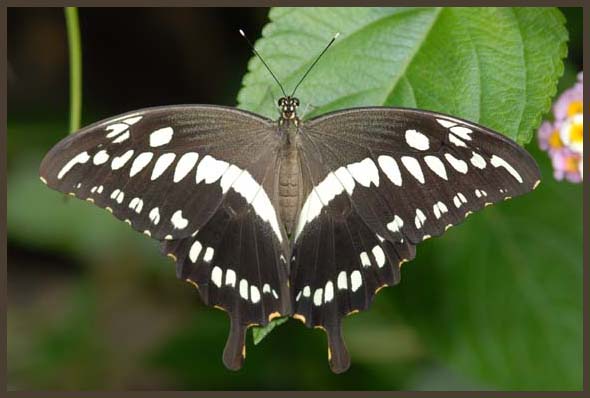
PAPILIO CONSTANTINUS(Papilio constantinus)
Phylum —arthropoda
Class —insecta
Order — lepidoptera
Family —papilionidae
Genus –papilio
Appearance
The younger caterpillars are brown orange. The older caterpillars are green with sky-blue dots and white spots.
The wingspan is 70–90 mm in males and 80–95 mm in females. The ground color is black with pale yellow or white markings including a large yellow spot in the cell.
Habitat
It is found in Sub-Saharan Africa.
Behavior
It demonstrates daily activity. The flight is fast.Its flight period is during the warmer months peaking from November to February.
Like other caterpillars of this family, the caterpillars of this butterfly have an osmetrium – a gland behind the head that extends in danger and looks like two long orangered "horns".
Diet
The larvae feed on Vepris Reflexi, Vepris lanceolata, Vepris undulata, Clausena species, Citrus species, Teclea trifoliatum, Teclea nobilis, and Teclea gerrardii.
Butterflies feed on nectar.
Reproduction
For their reproduction you need a terrarium with a size of 50 x 50 x 70 cm. Females lay eggs one at a time on the leaves of the forage plant. The eggs are creamy-white with a brown ring, spherical, 1.2 mm in diameter. The incubation period is 4 days.It is better to keep the caterpillars in containers with a mesh lid of 6-8 pieces. In the container, you need to place a forage plant.The caterpillar develops approximately for 24 days.The temperature is 23-25 oC at the humidity of60-70%. The pupa is green.The pupal stage lasts about 2 weeks.
In captivity
The mesh terrairum with a size of 50 × 50 × 70 mm is suitable for keeping butterflies. Room temperature is necessary. Daylight time is 12 hours. You can feed the butterflies with honey syrup diluted with boiled water in a ratio of 1: 10.
 Russian
Russian
 English
English























